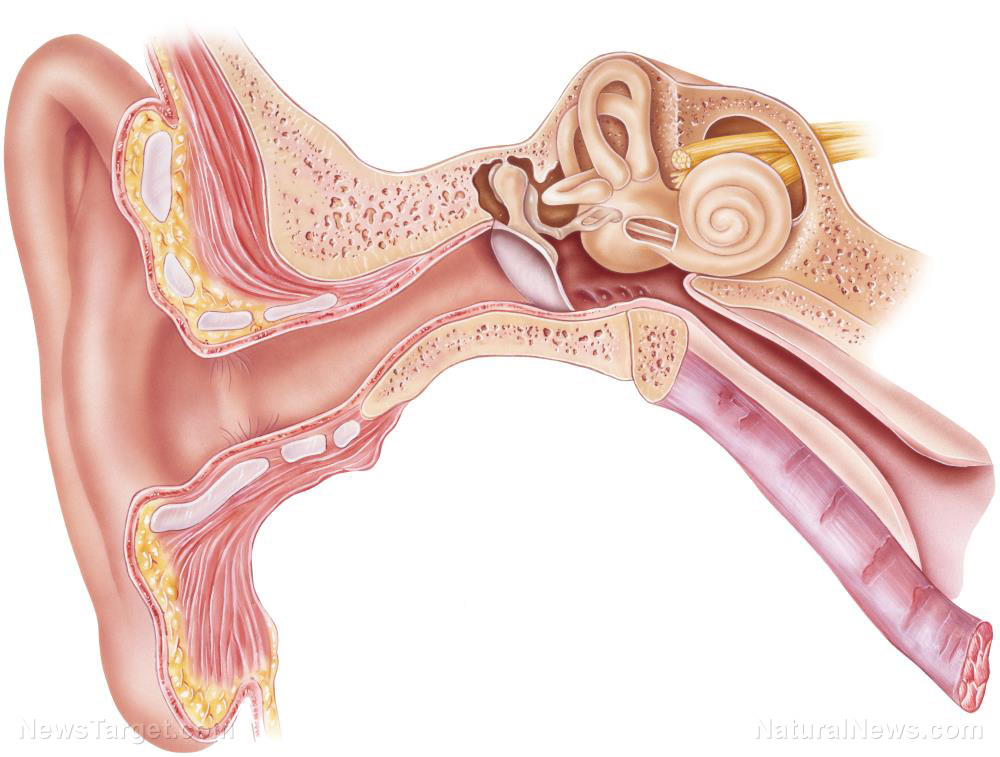Obesity and smaller brains: High body fat can reduce brain volume, warn experts
11/11/2019 / By Darnel Fernandez

Excessive accumulation of body fat has been associated with many adverse health effects like increased heart disease risk and Type 2 diabetes. Recent evidence suggests that it can also affect brain health.
A study published in the journal Radiology found that higher levels of body fat can lead to lower brain volume or brain shrinkage. These findings add new evidence to the growing body of research surrounding obesity and its association with the brain.
Big body, small brain
Previous studies have already established a link between obesity and brain volume. A study published in Neurology, researchers analyzed the brain images of 9,652 participants enrolled in the U.K. Biobank. Their results show that individuals with a higher body-mass index (BMI) and higher waist-to-hip ratio measurements had much lower gray matter volume in the brain compared to those with a healthy BMI.
Gray matter is a type of brain tissue that contains most of the brain’s nerve cells and is responsible for processing information in the brain.
In the recent study, researchers from the Netherlands also analyzed brain images of 12,087 people living in the U.K. between the ages 45 and 76. The participants underwent magnetic resonance imaging (MRI) to study the brain’s gray- and white matter structure. The researchers also assessed the participants’ total body fat (TBF) levels using a bioelectrical impedance analysis, a method that uses electrical currents sent throughout the body to measure fat.
Their results showed that people with high TBF have lower gray matter volume overall and lower volumes of gray matter in some regions of the brain.
“We found that having higher levels of fat distributed over the body is associated with smaller volumes of important structures of the brain, including gray matter structures that are located in the center of the brain,” said lead author Dr. Ilona Dekkers in a statement.
These areas included the thalamus, hippocampus, caudate nucleus, nucleus accumbens, putamen, and the globus pallidus. However, the researchers said that this observation was only found in brain imaging from men. Brain imaging from women showed lower gray matter volume in the globus pallidus alone.
“Interestingly, we observed that these associations are different for men and women, suggesting that gender is an important modifier of the link between fat percentage and the size of specific brain structures,” said Dekkers.
In both sexes, the researchers observed a link between high body fat levels and differences in the structure of white matter.
The researchers noted that their study only looked at overall body fat percentages and did not distinguish between different kinds of fat. They claim that future research could explore these differences, particularly the visceral white fat found in the abdominal organs.
Fight to be fit
Obesity is one of the world’s most challenging public health problems. Standford Health Care reports that 15 percent of children aged six to 19 are overweight and that over 60 percent of American adults are considered obese. The rise of obesity has also brought up an increase in cardiovascular disease and Type 2 diabetes. Here are a few tips on how to stop this epidemic:
- Consume less processed and sugary foods. Studies have shown that eating processed food can lead to a higher risk of obesity. These foods are often high in fat and sugar, which can encourage overeating.
- Increase dietary fiber intake. Dietary fiber can play a role in weight maintenance. Not only can fiber promote gastrointestinal health, but they are also found to reduce cravings and overeating.
- Eat more fruits and vegetables. Adding more fruits and vegetables to your diet can help cut down on calories and reduce weight. (Related: Apple peel compound may help fight obesity.)
- Exercise regularly. Physical activity increases the number of calories the body burns. By incorporating regular workouts in your schedule, you can maintain or even significantly reduce your weight.
Obesity is a problem, but not one we can’t fight. By keeping up with your health and practicing a healthy lifestyle, you can prevent the harmful effects of obesity.
Sources include:
Tagged Under: body fat, body mass index, brain health, brain shrinkage, cardiovascular diseases, cardiovascular health, diabetes, fightobesity, gastrointestinal health, obesity, physical activity, prevention, weight loss
RECENT NEWS & ARTICLES
BrainFunction.News is a fact-based public education website published by Brain Function News Features, LLC.
All content copyright © 2018 by Brain Function News Features, LLC.
Contact Us with Tips or Corrections
All trademarks, registered trademarks and servicemarks mentioned on this site are the property of their respective owners.




















